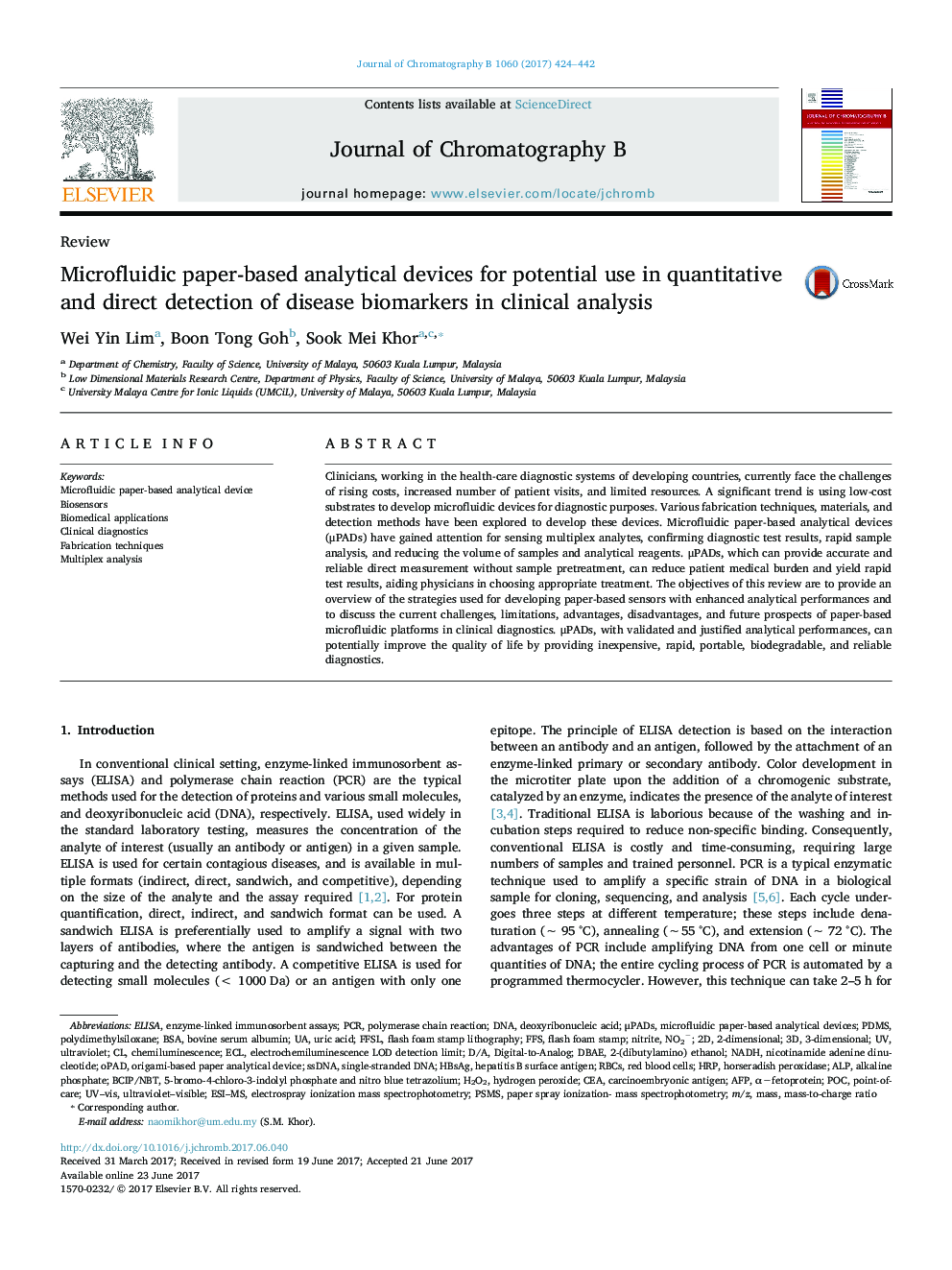| کد مقاله | کد نشریه | سال انتشار | مقاله انگلیسی | نسخه تمام متن |
|---|---|---|---|---|
| 5136387 | 1494003 | 2017 | 19 صفحه PDF | دانلود رایگان |

- The potential use of μPADs for detecting disease biomarkers in complexed matrices is overviewed.
- (Bio)analytical techniques employed in μPADs for health diagnostic applications are reviewed.
- The challenges, limitations, and future prospects of μPADs in clinical diagnostics are discussed.
Clinicians, working in the health-care diagnostic systems of developing countries, currently face the challenges of rising costs, increased number of patient visits, and limited resources. A significant trend is using low-cost substrates to develop microfluidic devices for diagnostic purposes. Various fabrication techniques, materials, and detection methods have been explored to develop these devices. Microfluidic paper-based analytical devices (μPADs) have gained attention for sensing multiplex analytes, confirming diagnostic test results, rapid sample analysis, and reducing the volume of samples and analytical reagents. μPADs, which can provide accurate and reliable direct measurement without sample pretreatment, can reduce patient medical burden and yield rapid test results, aiding physicians in choosing appropriate treatment. The objectives of this review are to provide an overview of the strategies used for developing paper-based sensors with enhanced analytical performances and to discuss the current challenges, limitations, advantages, disadvantages, and future prospects of paper-based microfluidic platforms in clinical diagnostics. μPADs, with validated and justified analytical performances, can potentially improve the quality of life by providing inexpensive, rapid, portable, biodegradable, and reliable diagnostics.
Journal: Journal of Chromatography B - Volume 1060, 15 August 2017, Pages 424-442